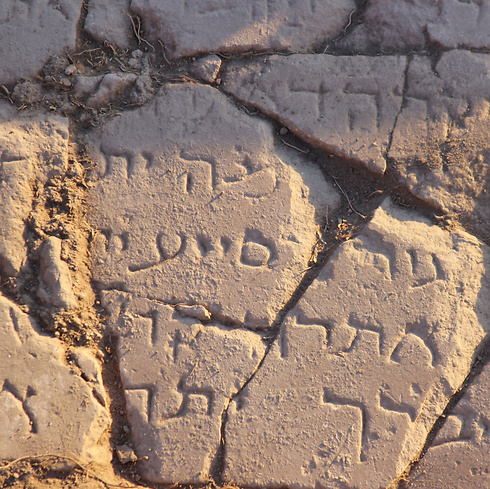
חותם ה מלך חזקיהו חפירות ארכיאולוגיה הר הבית ירושלים
Photo: Oriya Tadmor
Migdal (TPS) – An ancient bronze shovel and jug tied to the religious rituals of the Second Temple were discovered in archaeological excavations at Magdala – an important Jewish town dating back to the period of Roman antiquity, the Israel Antiquities Authority (IAA) announced on Tuesday.
During an ongoing excavation project, a group of volunteers from Chile discovered an ornate bronze incense shovel and a matching bronze jug believed to have stored incense or coals for ritual use.
“The incense shovel that was found is one of ten others that are known in the country from the Second Temple period. From early research it's thought that the incense shovel was only used for ritual purposes, for the embers and incense that were burnt in ritual ceremonies,” Dina Avshalom-Gorni, the Chief archaeologist on behalf of the IAA, said.
According to Avshalom-Gorni, incense shovels are known worldwide as ritualistic and religious implements in ancient religions, and their use has permeated into Judaism. The book of Exodus states: “You shall make the altar…you shall make pots for it to receive its ashes, and shovels and basins and forks and firepans; all its utensils you shall make of bronze,” a quote which ties these artifacts to the rituals of the Jewish Temple, at least symbolically.
“We know that these are certainly sacred tools, perhaps pertaining to the local synagogue discovered on this site, a synagogue which was quite grand and rich and important in the region,” Avshalom-Gorni explained. “It’s a rare and exciting find.”
The site is located near the town of Migdal along the western shore of Sea of Galilee. Migdal, or Magdala as it was known by its Latin name, was a large Jewish fishing and trade town in the Early Roman period. It is mentioned in Jewish sources, and at the time of the destruction of the Second Temple it served as a main military base for the ancient Jewish historian and general Josephus.
Another famous denizen of the city, according to the Christian tradition, was the penitent prostitute Mary Magdalene—named for her birthplace Migdal.
In recent years the IAA has been leading extensive excavations at the site, overseen by the archaeologists Dina Avshalom-Gorni and Arfan Najar, in partnership with the Anahuac University of Mexico’s Dr. Marcela Zapata-Meza and with the help of volunteers from Mexico, Chile, Spain and Italy.
“It is a very impressive site and is open to the general public. The land actually belongs to a private developer from the Catholic Church, who planned to build a hotel for pilgrims on that plot,” Avshalom-Gorni explained.
According to Israeli law, before approving construction on any building project in the country IAA experts must first survey the plot to assure it will not damage an archeological site.
“We began exploratory digs in 2009 and little by little it became evident to us and to the Catholic Church that we have discovered a major site which was dated to the exact time of the ministry of Jesus in the Galilee, and the home of Mary Magdalene,” she added.
The landowner then decided to turn the location into an open-air museum alongside the ongoing excavations, which continue to produce thrilling archaeological finds.
Printed with permission from Tazpit Press Service (TPS )

















